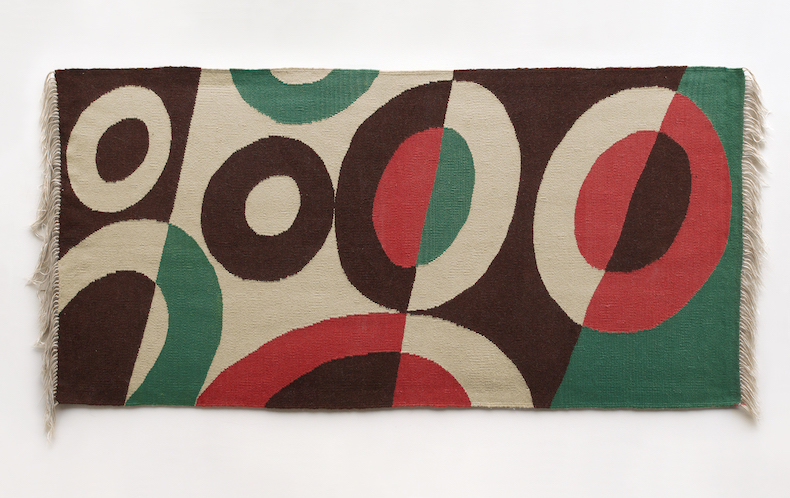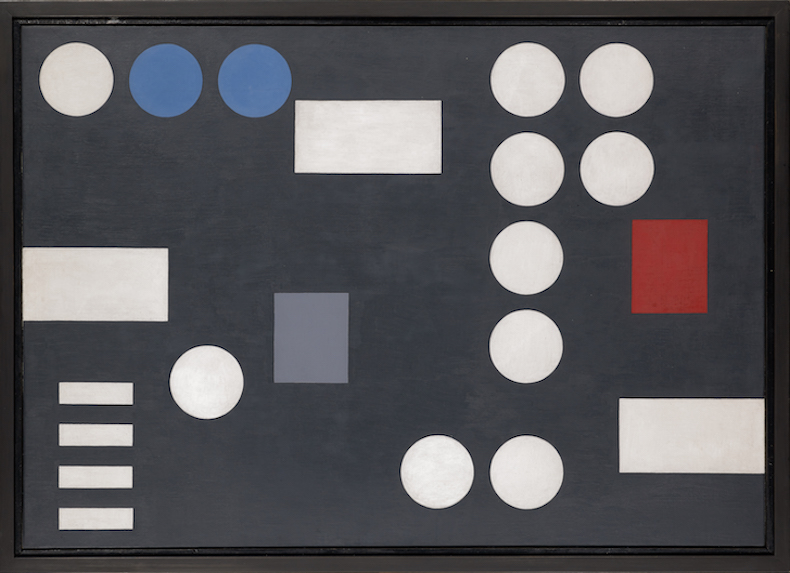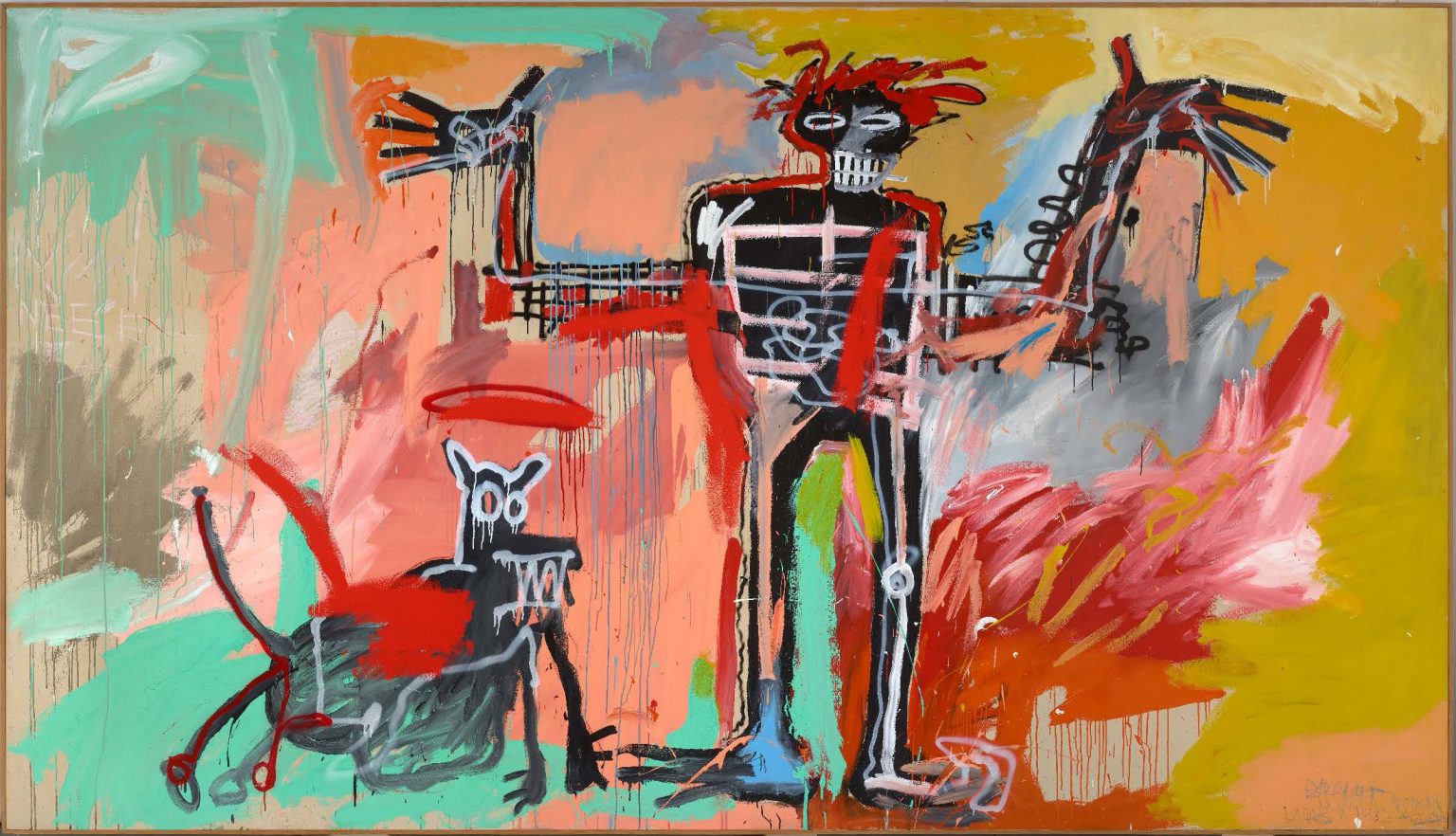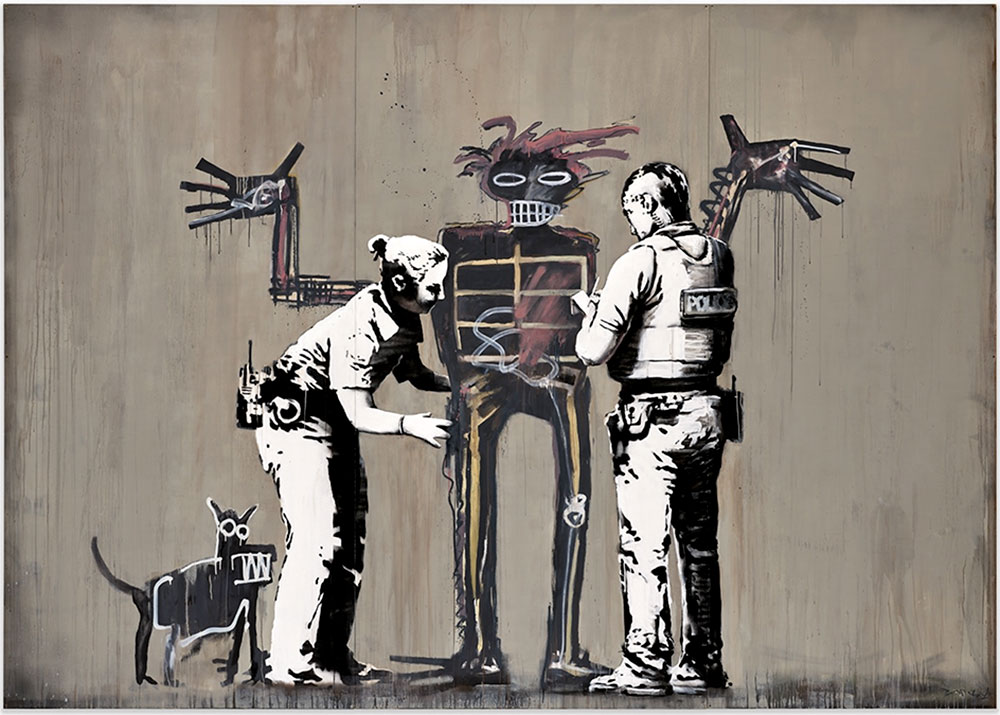Museum of Fine Arts, Boston (MFA)
October 13, 2024 through January 20, 2025
American painter Georgia O’Keeffe (1887–1986) and British sculptor Henry Moore (1898–1986) are among the most distinctive artists of the 20th century. They have long been admired for their extraordinary distillations of natural forms into abstraction—O’Keeffe’s iconic paintings of flowers and Moore’s monumental public sculpture. Opening at the Museum of Fine Arts, Boston (MFA) this fall, the major exhibition Georgia O’Keeffe and Henry Moore is the first to bring these two artists together, using compelling visual juxtapositions to explore their common ways of seeing. Each artist experimented with unusual perspectives, shifts in scale, and layered compositions to produce works that were informed by their surroundings—O’Keeffe in New Mexico and Moore in Hertfordshire, England.
Featuring over 150 works—including about 60 works by O’Keeffe and 90 by Moore—the exhibition includes paintings, sculptures, and works on paper, as well as faithful recreations of each of the artists’ studios containing their tools and found objects. Organized by the San Diego Museum of Art, Georgia O’Keeffe and Henry Moore is an unprecedented collaboration with the Georgia O’Keeffe Museum and the Henry Moore Foundation.
“Looking at O’Keeffe and Moore together, we can see how both artists were inspired by and also made use of natural forms. O’Keeffe hoped that her paintings would make people pay attention to things they usually overlooked—the soft gradations of a flower petal, the patterns within a landscape, or the shapes between two objects. As O’Keeffe said herself, ‘to see takes time.’ The chance to see her work in person is not to be missed,” said Erica Hirshler, Croll Senior Curator of American Paintings.
Georgia O’Keeffe and Henry Moore is on view at the MFA from in the Ann and Graham Gund Gallery.
“While many of our visitors here in Boston will know O’Keeffe’s work and reputation well, they might be less familiar with Moore, one of the most important British artists of the 20th century. The generous loans from the Henry Moore Foundation allow us to recreate the artist’s studio and will really help bring Moore alive and show how found objects played a role in the creation of his large-scale public sculpture,” said Courtney Harris, Assistant Curator of European Decorative Arts and Sculpture.
Through careful observation of their surroundings and the objects they collected, O’Keeffe and Moore reimagined natural forms—bones, stones, shells, flowers, and the land itself—into dynamic abstractions. Each played with scale, exploring the effects of making small things large. They twisted and turned pieces in space, searching for balance, looking within their complex interiors, and exploring how objects transform the spaces around them. The exhibition presents their works both individually and in dialogue, presenting unique juxtapositions such as:
- O’Keeffe’s Red Tree, Yellow Sky (1952, Museum of Fine Arts, Boston) and Moore’s Working Model for Standing Figure: Knife Edge (1961, The Henry Moore Foundation): O’Keeffe often envisioned how miniature forms might become monumental. In this painting she juxtaposed a small piece of wood against a distant landscape, conflating near and far, large and small. Moore similarly made a small thing enormous, inspired by the breastbone of a bird to create a figurative sculpture that twists in space and encourages viewers to walk around it.
- Moore’s Helmet (1939–1940, The Henry Moore Foundation) and O’Keeffe’s Jack-in-the-Pulpit No. 3 (1930, National Gallery of Art, Washington): This work by Moore was the first in a series of small sculptures with hollow shells that encased unique interior forms. O’Keeffe similarly used a technique of enclosure in her painting of a deep purple flower with its complex interior and billowing leaves.
- O’Keeffe’s Pelvis IV (1944, Georgia O’Keeffe Museum) and Moore’s Reclining Figure Bone (1975, The Henry Moore Foundation): O’Keeffe plays with scale, depth, and perspective by showing an entire vista through the aperture of a sun-bleached pelvic bone. Her interest in simplification and negative space is mirrored in Moore’s reduction of the human figure to a simple curve. His choice of travertine, with its porous texture and off-white color, maintains its connection to his inspiration in a weathered animal bone.
There were many other artists active in the U.S. and Europe in the mid-20th century who also looked to nature. The MFA’s presentation of Georgia O’Keeffe and Henry Moore draws upon the Museum’s modernist collection to provide a broader context. O’Keeffe and Moore’s works are put into dialogue with photographs, prints, sculpture, and paintings by artists including Edward Weston (1886–1958), Alexander Calder (1898–1976), Barbara Hepworth (1903–1975), Arthur Dove (1880–1946), Jean Arp (1886–1966), Imogen Cunningham (1883–1976), and Maria Montoya Martinez (Poveka or Water Pond Lily), (Powhogeh Owingeh [San Ildefonso Pueblo]) (1887–1980).
At the core of the exhibition are recreations of the artists’ studios, built with original contents from O’Keeffe’s Ghost Ranch studio in the hills of New Mexico and Moore’s Bourne Maquette Studio in Perry Green, a small hamlet surrounded by sheep fields in Hertfordshire, England. Though both O’Keeffe and Moore remained within reach of city life, the two artists worked in rural settings, both amassing large personal collections of animal bones, stones, seashells, and other natural materials that served as key sources of inspiration. These found objects can be seen in these spaces alongside tools, unfinished works, and plaster maquettes. The studio installations illuminate the heart of O’Keeffe and Moore’s artistic practices—something rarely made visible in museum spaces—and create richer portraits of the artists by encouraging visitors to imagine how they worked and lived.
Images

1. Pelvis IV, 1944
Georgia O'Keeffe (American, 1887–1986)
Oil on masonite
* Georgia O'Keeffe Museum, Gift of The Burnett Foundation, 1997.6.1
* © Private Collection
* Courtesy Museum of Fine Arts, Boston

2. Reclining Figure Bone, 1975
Henry Moore (English, 1898–1986)
Travertine marble
* The Henry Moore Foundation: gift of the artist 1977 LH643
* Photo: Michel Muller. Reproduced by permission of The Henry Moore Foundation.
* Courtesy Museum of Fine Arts, Boston

3. Red Tree, Yellow Sky, 1952
Georgia O'Keeffe (American, 1887–1986)
Oil on canvas
* Gift of William H. and Saundra B. Lane and Museum purchase
* © 2024 Georgia O'Keeffe Museum / Artist Rights Society (ARS), New York
* Photograph © Museum of Fine Arts, Boston

4. Working Model for Standing Figure: Knife Edge
Henry Moore (English, 1898–1986)
Fiberglass
* The Henry Moore Foundation: gift of the artist 1977 LH481
* Photo: David Mitchinson. Reproduced by permission of The Henry Moore Foundation.
* Courtesy Museum of Fine Arts, Boston

5. Spring, 1948
Georgia O'Keeffe (American, 1887–1986)
Oil on canvas
* Georgia O'Keeffe Museum, Gift of The Burnett Foundation, 1997.6.28
* © 2024 Georgia O'Keeffe Museum / Artist Rights Society (ARS), New York
* Courtesy Museum of Fine Arts, Boston

6. Helmet, 1939‑1940
Henry Moore (English, 1898–1986)
Bronze
* The Henry Moore Foundation: gift of Irina Moore 1977 LH 212
* Photo: Nigel Moore. Reproduced by permission of The Henry Moore Foundation.
* Courtesy Museum of Fine Arts, Boston

7. Thin Reclining Figure, 1979‑1980
Henry Moore (English, 1898–1986)
White marble
* The Henry Moore Foundation: acquired 1986 LH 734
* Photo: Jonty Wilde. Reproduced by permission of The Henry Moore Foundation.
* Courtesy Museum of Fine Arts, Boston

8. Mother and Child, 1978
Henry Moore (English, 1898–1986)
Stalactite
* The Henry Moore Foundation: acquired 1986 LH 754
* Photo: Michel Muller. Reproduced by permission of The Henry Moore Foundation.
* Courtesy Museum of Fine Arts, Boston

9. Leaf Motif, No. 2, 1924
Georgia O'Keeffe (American, 1887–1986)
Oil on canvas
* Collection of the McNay Art Museum, Mary and Sylvan Lang Collection, 1975.45
© 2024 Georgia O'Keeffe Museum / Artist Rights Society (ARS), New York
* Courtesy Museum of Fine Arts, Boston

10. Abstraction White Rose, 1927
Georgia O'Keeffe (American, 1887–1986)
Oil on canvas
*Georgia O'Keeffe Museum, Gift of The Burnett Foundation and The Georgia O'Keeffe Foundation, 1997.04.02
* © Georgia O'Keeffe Museum / Artist Rights Society (ARS), New York.
*Courtesy, Museum of Fine Arts, Boston

11. Reclining Figure, 1959‑1964
Henry Moore (English, 1898–1986)
Elmwood
*The Henry Moore Foundation: gift of Irina Moore 1977 LH 452
*Photo credit: Jonty Wilde
*Courtesy, Museum of Fine Arts, Boston

12. Jack‑in‑the‑Pulpit No. 3, 1930
Georgia O'Keeffe (American, 1887–1986)
Oil on canvas
*National Gallery of Art, Washington, Alfred Stieglitz Collection, Bequest of Georgia O'Keeffe, 1987.58.2
*© Board of Trustees, National Gallery of Art, Washington.
*Courtesy, Museum of Fine Arts, Boston
Checklist:
MFA Boston_O'Keeffe and Moore_Object Checklist 6.25.24.pdf
Artist Biographies
Georgia O’Keeffe was born in 1887 and grew up in rural Sun Prairie, Wisconsin. She first studied art in Chicago and then, in New York, with the American Impressionist painter William Merritt Chase. But she pursued a more modern approach, inspired by Arthur Wesley Dow, whose compositional theories were rooted in Japanese art. In the 1910s, O’Keeffe, then an art teacher in West Texas, began to make nature-based abstractions, learning to love the landscapes of the southwest.
O’Keeffe came to New York in 1916. Without her knowledge, a friend had sent her drawings to the New York art dealer, photographer, and champion of modernism Alfred Stieglitz, who gave O’Keeffe her first show at his gallery 291. With Stieglitz’s support, she came back to New York in 1918. They began a romantic relationship, marrying in 1924. O’Keeffe painted flowers, skyscrapers, and, following trips to New Mexico, bones, which she shipped back in barrels to New York. But the stark beauty of the southwest always beckoned. O’Keeffe visited for long periods and began to acquire property, first at Ghost Ranch and then in Abiquiú. She moved to New Mexico permanently after Stieglitz’s death in 1946.
O’Keeffe carefully nurtured her art, her career, and her persona, earning a place in the center of the New York art world. Her work was featured in a solo exhibition at MoMA in 1946—the museum’s first show devoted to a woman artist. She gained public recognition after a 1968 cover story in Life magazine. In 1997, The Georgia O’Keeffe Museum in Santa Fe, New Mexico opened to the public.
Henry Moore was born in 1898 in Castleford, a mining town in the northern English county of Yorkshire. He served in World War I and upon his return, enrolled at the Leeds School of Art as the first student of a new sculpture department. Through the 1920s and ’30s he exhibited at shows in London and worked in a studio in Hampstead in northern London. During the World War II, he served as an Official War Artist, making drawings of Londoners sheltering in the Underground during the Blitz.
In 1940, after his London home was damaged by German bombs, Moore settled permanently at Hoglands, a cottage in Perry Green in Hertfordshire, about 35 miles north of London. He spent the next four decades creating some of the most recognizable works of public sculpture of the 20th century. He was enormously successful and well known. He was honored with a solo exhibition at MoMA in 1946, the same year as O’Keeffe’s. He was appointed to represent Britain at the Venice Biennale in 1948, and participated in the Festival of Britain in 1951.
Today, Moore’s legacy lives on through the Henry Moore Foundation at Perry Green and in Leeds. His work is also celebrated in an important suite of galleries at Tate Britain in London and in the Henry Moore Sculpture Centre at the Art Gallery of Ontario in Toronto. His sculpture can be found in public spaces across the world.








![Henri Matisse, Grand nu couché (Nu rose) [Large Reclining Nude (The Pink Nude)], 1935](https://www.fondationbeyeler.ch/fileadmin/_processed_/2/4/csm_Matisse_Large_Reclining_Nude_BMA_LAC_300x211mm_7ac9970904.jpg)










![Henri Matisse, Intérieur à la fougère noire [Interior with Black Fern (The Black Fern)], 1948](https://www.fondationbeyeler.ch/fileadmin/_processed_/6/b/csm_Matisse_Interieur-a-la_LAC_229x300mm_6c9c17ef7c.jpg)




















